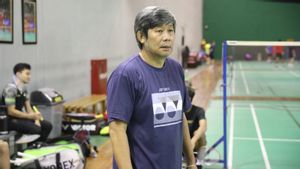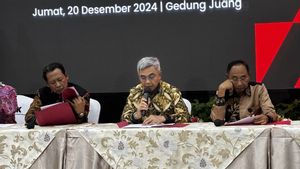JAKARTA - Spokesperson for the COVID-19 Task Force, Wiku Adisasmito, assessed that the surge in COVID-19 cases could begin to decline after the restrictions on mobility were implemented. This can be seen from the pattern of increasing cases that occurred in Indonesia previously.
This means that efforts to control COVID-19 cases in Indonesia still rely on tightening community activities. In fact, said Wiku, restrictions on mobility and activities cannot be carried out continuously.
"Restrictions on mobility and activities are still the main factors, even though this approach cannot be carried out continuously because it will have an impact on other sectors and of course it will cost a lot of money," said Wiku in a virtual press conference, Thursday, September 30.
Wiku regrets this condition. This is because this shows that efforts to maintain 3M's health protocols have not been maximized and have not been the main factor in reducing COVID-19 cases.
"For that I emphasize that whatever efforts will be made, if the implementation and supervision of the prokes is not strong, then these things will not work effectively," said Wiku.
Wiku explained that the transmission of COVID-19 is influenced by many factors and may differ based on the place and behavior of each community in it.
Wiku divides three places that are at risk of case transmission. The first is home and residence. Wiku said that the home and living environment are not 100 percent infection-free areas.
"Risk factors at home and in the living environment include the level of collective health protocol compliance, residential density, and the proximity and duration of interaction between communities, both with family members from the same house, family members from different homes, as well as with neighbors around the place of residence. , he said.
The second place is during the trip. Wiku said the risk factors for COVID-19 transmission during travel varied. However, this transmission is most likely to occur in public transportation.
"Aspects that cause transmission during travel also vary, including the level of compliance with health protocols by all passengers, ventilation systems for transportation equipment, distance between passengers, duration of travel and cleanliness of transportation equipment," he said.
Third place outdoors. Typical risk factors that can increase the chance of transmission in activities outside the home are the level of collective health protocol compliance, the contact circle of each person who is active while traveling and at home, and the size of the room and indoor ventilation for activities.
"Activities carried out outside the home involve intense physical interaction, such as shaking hands, hugging, etc., carried out in crowded conditions and without limitations on capacity and distance to enter activities that are classified as risky," said Wiku.
The English, Chinese, Japanese, Arabic, and French versions are automatically generated by the AI. So there may still be inaccuracies in translating, please always see Indonesian as our main language. (system supported by DigitalSiber.id)













